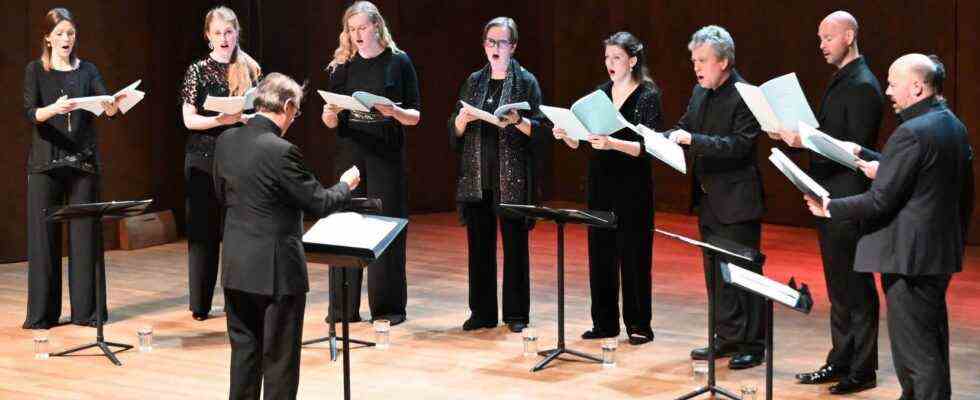The famous vocal ensemble the Tallis Scholars gave a concert on Tuesday evening at Bourgie Hall under the direction of its founder, Peter Phillips, who will celebrate his 50th anniversary next year at the head of the ensemble. The experience is great, but isn’t the way outdated?
The Tallis Scholars are a renowned brand, since the concert had attracted significantly more spectators than Vox Luminis by Lionel Meunier or the Correspondances ensemble by Sébastien Daucé. That these last two easily exceed what we heard on Tuesday evening does not bother the majority of the spectators too much, but asks, within the framework of a critical commentary, to be explained.
Fortunately, this concert had a second part. We will put aside the tortuous work of Matthew Martin, a harmonic deconstruction of Guerrero. So much beautiful choral music is being written at the moment that finding it, promoting it and, in addition, taking it on tour abroad is a joke. Another uselessness: Stravinsky’s miniature would work if it were integrated into an edifying continuum, not as a unit, where a soprano leaves then returns and where the public applauds these few bars.
No, the salt of the second part was the beauty of Heinrich Isaac’s music (buy the disc Carlos V of Jordi Savall if you do not know…), the variety very judiciously brought by Virgencita by Arvo Pärt and two compositions by Francisco Guerrero (1528-1599). What Guerrero brings compared to the Flemish polyphony (Lassus and Josquin des Prés) of the first part, it is an addition of flesh with a deeper dynamic register. This style suited the vocal ensemble quite well.
The intense angelism
There was, however, the first half where the Missa Ave maris stella, a major composition by Josquin des Prés, brings out very well the “Tallis Scholars system”, which could be described unceremoniously as a caricature of English choral singing of the 1980s.
In fact, this sonic and stylistic ideal still endures, through ensembles such as this one. If there were ‘musical kits’, this is how a ‘Tallis Scholars kit’ could be put together. Start by organizing the “championship of the Miserere of Allegri”. This allows you to select your soprano desk: the podium of the most powerful white voices, those that can “grow” without moving or failing, in short, creating the rare commodity of “intense angelism”.
Because the whole “interpretation” of Flemish polyphony with the Tallis Scholars grinder will be based on a recurring release of bursts of intense angelism. To fill in the face in downtime, you hire a loud-mouthed tenor and bass, and so that it doesn’t make too much noise, you associate their shadow with them. Result: we don’t have coherent desks, neither tenor nor bass, but voices that pierce in proportion to the size of the singers.
Lost in the middle of all this we have two violas. They look all dull and bland and lost in a sandwich. But they are the ones who are right and the whole should be modeled in their image. The proof ? Josquin des Prés, Agnus Dei: a duet between the alto 2 and the soprano 3 (excellent and slightly deviating from the above scheme), the best musical moment of the whole Mass, which induces a very decent Agnus. The rest, as we have said, is a caricature. But it’s the Tallis Scholars, so it’s gotta be pretty good, sort of “reference,” isn’t it?
We’ve moved on so much, including in the UK, thankfully, with the Stile Antico ensemble. But deep down, it’s been so long. If you have an on-demand listening platform and you were at the concert on Tuesday, listen to the Mass Ave maris stella by A Sei Voci (1993!) to find out what Flemish polyphony simmered with little onions is without fantasy island mannerisms.
